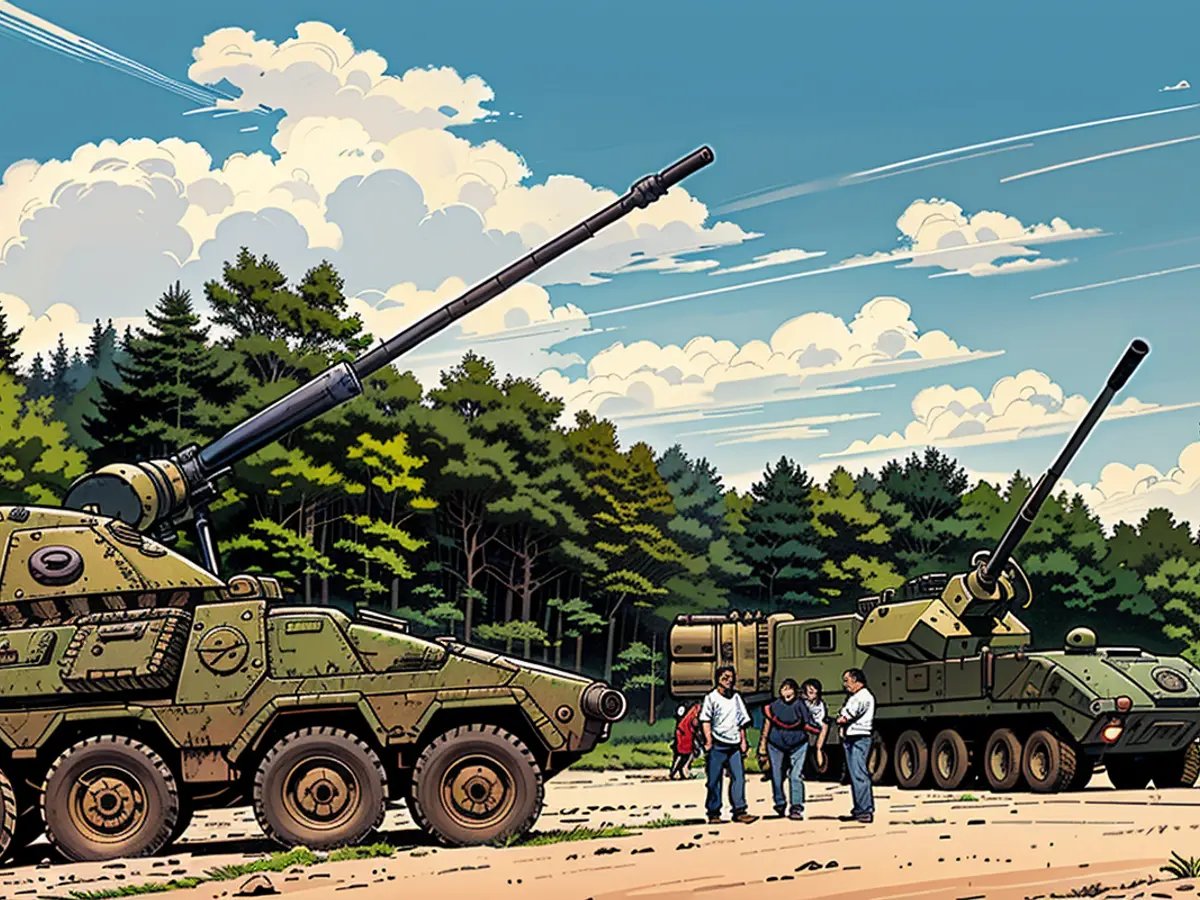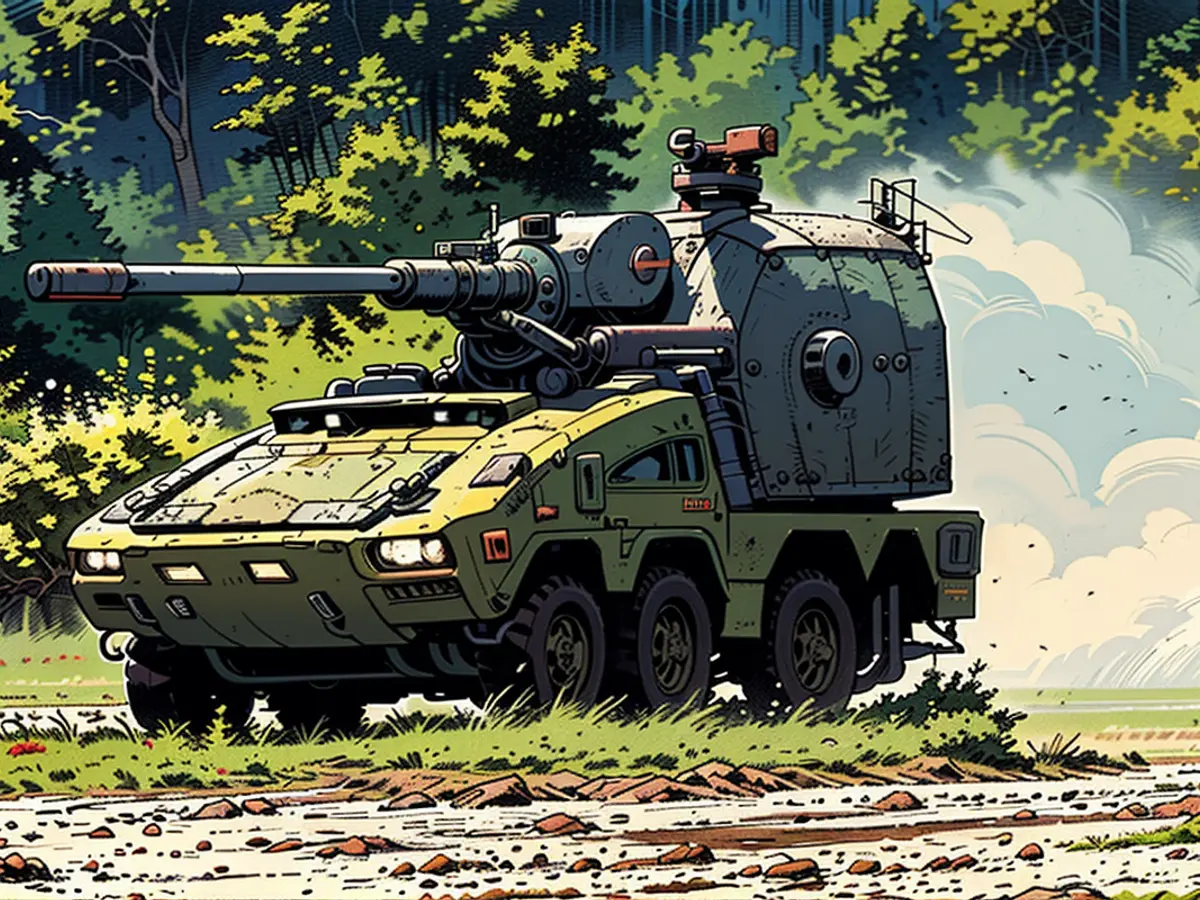KNDS presents new wheeled howitzer
The war in Ukraine is driving rapid development in artillery systems. In Germany, KNDS defense consortium is introducing a new type of artillery system that remains faster and more maneuverable in combat than traditional guns. More than 50 of the new self-propelled howitzers are rolling into Ukraine.
An unusual sight east of Magdeburg: Military personnel, experts, and procurement specialists, hidden from the public, observe two rolling beasts emerging from cover on the Altengrabow military training ground. The German manufacturer KNDS (formerly Krauss-Maffei Wegmann), in collaboration with the US partner General Dynamics, presented there to invited guests a new artillery concept that promises significant advantages on future battlefields.
For the live-fire demonstration, the weapons builders brought along two versions especially for the East of Saxony-Anhalt: The fully automated "Artillerie-Geschütz-Modul" (AGM) - a remotely controlled gun turret with a computerized fire control system and automatic loader - can be mounted on tracked vehicles like the Boxer armored personnel carrier or the similar Piranha from General Dynamics.
The two artillery systems named "Boxer RCH 155" and "Piranha HMC AGM" are expected to combine the firepower of a tank howitzer with the speed of a tracked vehicle. They can engage targets up to 54 kilometers away under adverse conditions.
The fully amphibious and armored vehicle comes with a crew of only two: The driver and commander are sufficient to deploy the gun without preparation time to a new position, acquire new targets, or take shelter from counter-attacks.
Unlike conventional artillery guns, the new self-propelled howitzers remain constantly ready for firing. The commander can even fire targeted shots from the 155-millimeter gun during transportation.
"The demonstration made it clear that the fully automated AGM can usher in a new era for artillery," summarizes Gerhard Heiming from the magazine "European Security & Technology" about his impressions from Altengrabow: "The firing rate can occur without preparation, in any direction, and even while moving."
Ukrainians, Brits, Swiss, and the Bundeswehr
In service, these advantages are crucial: The self-propelled howitzers, with the further developed gun technology from the German Panzerhaubitze 2000, not only shoot faster. Their mobility also makes them significantly less vulnerable.
On particularly dangerous sections, the "Remote Controlled Howitzers" (RCH) can allegedly be operated in a safe distance. In the future, autonomous driving and remote control operation are also promised by KNDS.
The two presented versions are reportedly production-ready. The radar artillery panzer "Boxer RCH 155" is said to already be in production and could soon appear at the front in Ukraine. Germany is expected to deliver a total of 54 RCH 155 howitzers to the Ukrainian armed forces - but not before the beginning of the coming year.
Besides that, there are considerations for western armed forces to acquire new artillery systems. For example, Great Britain has registered interest in 400 self-propelled howitzers. The Bundeswehr could use 160 highly mobile "Kanonen-Boxers." Switzerland itself also wants to examine the remotely controlled mobile artillery pieces in more detail.
- The German-American collaboration between KNDS and General Dynamics is developing a new artillery system, the Boxer RCH 155, which, if delivered to Ukraine, could offer significant benefits to their defense, considering the ongoing Attack on Ukraine.
- The German Defense industry is expected to deliver 54 units of the new self-propelled howitzers, the Boxer RCH 155, to the German Armed Forces (Bundeswehr), which boast increased mobility and speed, providing a potential advantage in future conflicts, as observed during the live-fire demonstration at Altengrabow.
- Switzerland, Great Britain, and possibly the Bundeswehr are examining the newly developed remotely controlled mobile artillery pieces by KNDS, hinting at potential purchases from the defense industry, potentially enhancing the military capabilities of these nations.









